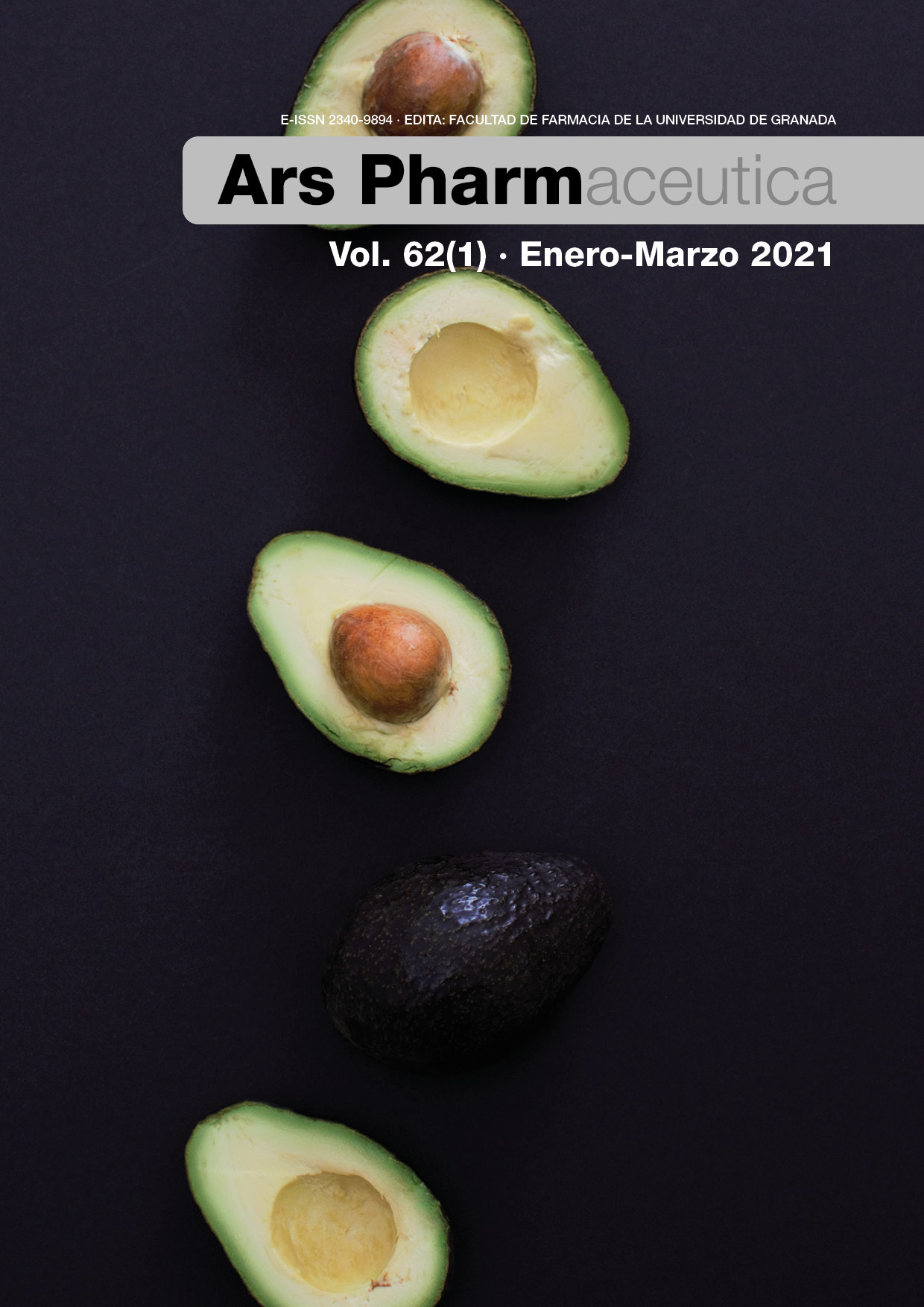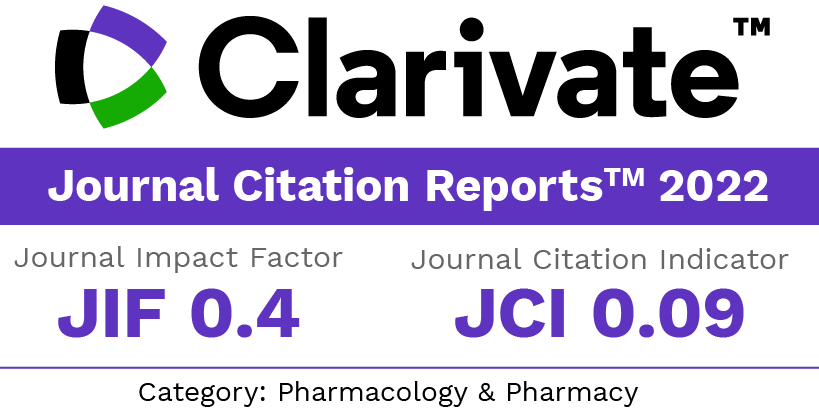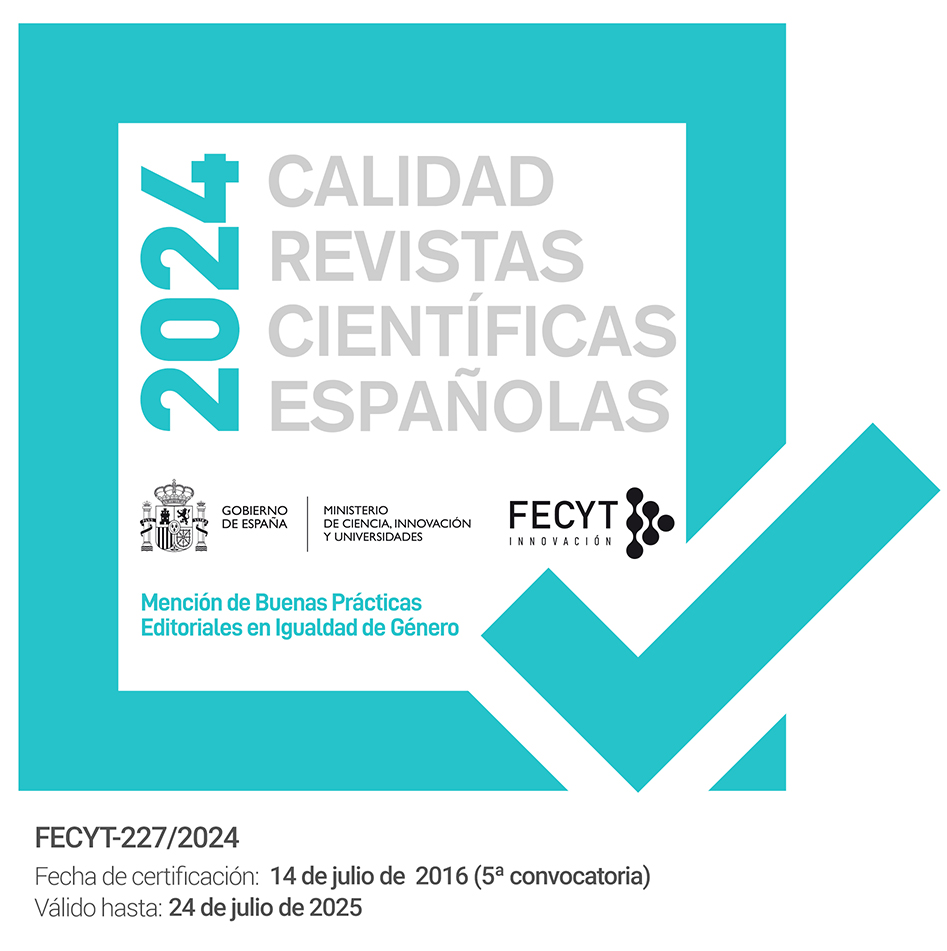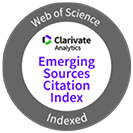Glycemia-reducing effects of Bolivian nutraceutical plants
Keywords:
Nutraceutical, Natural product, Insulin secretionAbstract
Introduction: The prevalence of diabetes type 2 is increasing worldwide, thus the search of novel alternative therapies is needed. According to their traditional use, we selected five Bolivian plants Chenopodium quinoa (CQ) Amaranthus caudatus (AC), Chenopodium pallidicaule (CP), Lupinus mutabilis (LM) and Smallanthus sonchifolius (SS) that are traditionally used to control glycemia.
Methods: The effect of a single oral administration of Ethanolic (EtOH), hydro-ethanolic (EtOH70) and aqueous (Aq) extracts from all plant species were tested for their effect on blood glucose in non-fasted mice and during the oral glucose tolerance test (OGTT). The effect on insulin secretion was evaluated in mice pancreatic islets.
Results: EtOH70 extracts of all the plants showed glucose-reducing effect at the highest dose evaluated (2000 mg/kg b.w.). EtOH70 extracts improved the glucose tolerance evaluated by the OGTT in mice fasted for 12 hours. The extracts have different effects on glucose homeostasis since just extracts of AC, LM and CQ but not CP and SS increased insulin secretion as shown on mice pancreatic islets. The phytochemical qualitative characterization of EtOH70 extracts detected phenolic acids and flavonoids in AC, CP and CQ; alkaloids in LM and anthocyanidins in SS. None of EtOH70 extracts tested showed in vitro or in vivo acute toxicity at concentrations where they exhibit glucose lowering effects.
Conclusions: We report here that extracts from AC, CQ, CP, LM and SS exhibit glucose lowering effect while just AC, CQ and LM stimulate directly the insulin secretion.
Downloads
References
Ogurtsova K, da Rocha Fernandes JD, Huang Y, Linnenkamp U, Guariguata L, Cho NH, et al. IDF Diabetes Atlas: Global estimates for the prevalence of diabetes for 2015 and 2040. Diabetes Res Clin Pract.128:40-50. doi: 10.1016/j.diabres.2017.03.024
Alejandro R-H, María JC, Huguette R-O, Eduardo M, Guillermo C, Gabriela G-S. Obesity, Metabolic Syndrome, and Dietary Therapeutical Approaches with a Special Focus on Nutraceuticals (Polyphenols): A Mini-Review. Int J Vitam Nutr Res. 2014;84(3-4):0113-23. doi: 10.1024/0300-9831/a000198
Wilding JP. The importance of weight management in type 2 diabetes mellitus. Int J Clin Pract. 2014;68(6):682-91. doi: 10.1111/ijcp.12384
Stanhope KL. Sugar consumption, metabolic disease and obesity: The state of the controversy. Crit Rev Clin Lab Sci. 2016;53(1):52-67. doi: 10.3109/10408363.2015.1084990
Chaudhury A, Duvoor C, Reddy Dendi VS, Kraleti S, Chada A, Ravilla R, et al. Clinical Review of Antidiabetic Drugs: Implications for Type 2 Diabetes Mellitus Management. Front Endocrinol. 2017;8:6. doi: 10.3389/fendo.2017.00006
Brown L, Poudyal H, Panchal SK. Functional foods as potential therapeutic options for metabolic syndrome. Obesity Rev. 2015;16(11):914-41. doi: 10.1111/obr.12313
Magrone T, Perez de Heredia F, Jirillo E, Morabito G, Marcos A, Serafini M. Functional foods and nutraceuticals as therapeutic tools for the treatment of diet-related diseases. Can J Physiol Pharmacol. 2013;91(6):387-96. doi: 10.1139/cjpp-2012-0307
Das L, Bhaumik E, Raychaudhuri U, Chakraborty R. Role of nutraceuticals in human health. J Food Sci Technol. 2012;49(2):173-83. doi: 10.1007/s13197-011-0269-4
Bahadoran Z, Mirmiran P, Azizi F. Dietary polyphenols as potential nutraceuticals in management of diabetes: a review. J Diabetes Metab Disord. 2013;12(1):43. doi: 10.1186/2251-6581-12-43
Gonzalez-Sarrias A, Larrosa M, Garcia-Conesa MT, Tomas-Barberan FA, Espin JC. Nutraceuticals for older people: facts, fictions and gaps in knowledge. Maturitas. 2013;75(4):313-34. doi: 10.1016/j.maturitas.2013.05.006
Brayden DJ, Baird AW. Opportunities for drug-delivery research in nutraceuticals and functional foods? Ther Deliv. 2013;4(3):301-5. doi: 10.4155/tde.12.152
Repo-Carrasco R, Espinoza C, Jacobsen SE. Nutritional value and use of the Andean crops quinoa (Chenopodium quinoa) and kaniwa (Chenopodium pallidicaule). Food Rev Int. 2003;19(1-2):179-89. doi: 10.1081/FRI-120018884
Caetano BFR, de Moura NA, Almeida APS, Dias MC, Sivieri K, Barbisan LF. Yacon (Smallanthus sonchifolius) as a Food Supplement: Health-Promoting Benefits of Fructooligosaccharides. Nutrients. 2016;8(7):436. doi: 10.3390/nu8070436
Dini I, Schettino O, Dini A. Studies on the constituents of Lupinus mutabilis (Fabaceae). Isolation and characterization of two new isoflavonoid derivatives. J Agr Food Chem. 1998;46(12):5089-92. doi:10.1021/jf980386l
Baldeon ME, Castro J, Villacres E, Narvaez L, Fornasini M. Hypoglycemic effect of cooked Lupinus mutabilis and its purified alkaloids in subjects with type-2 diabetes. Nutr hosp. 2012;27(4):1261-6. doi: 10.3305/nh.2012.27.4.5761
Fornasini M, Castro J, Villacres E, Narvaez L, Villamar MP, Baldeon ME. Hypoglycemic effect of Lupinus mutabilis in healthy volunteers and subjects with dysglycemia. Nutr hosp. 2012;27(2):425-33. doi: 10.1590/S0212-16112012000200012
Hemalatha P, Bomzan DP, Sathyendra Rao BV, Sreerama YN. Distribution of phenolic antioxidants in whole and milled fractions of quinoa and their inhibitory effects on α-amylase and α-glucosidase activities. Food Chem. 2016;199:330-8. doi: 10.1016/j.foodchem.2015.12.025
Kumar A, Lakshman K, Jayaveera KN, Sheshadri Shekar D, Narayan Swamy VB, Khan S, et al. In Vitro alpha-Amylase Inhibition and Antioxidant Activities of Methanolic Extract of Amaranthus Caudatus Linn. Oman Med J. 2011;26(3):166-70. doi: 10.5001/omj.2011.40
Choque Delgado GT, da Silva Cunha Tamashiro WM, Maróstica Junior MR, Pastore GM. Yacon (Smallanthus sonchifolius): A Functional Food. Plant Foods Hum Nutr. 2013;68(3):222-8. doi: 10.1007/s11130-013-0362-0
Harborne J. Phytochemical Methods: A Guide to Modern Techniques of Plant Analysis. London: Chapman and Hall; 1998. doi:10.1046/j.1365-3059.1999.00318.x
Oecd. Test No. 423: Acute Oral toxicity - Acute Toxic Class Method: OECD Publishing. doi:10.1787/9789264071001-en
Mosmann T. Rapid colorimetric assay for cellular growth and survival: application to proliferation and cytotoxicity assays. J Immunol Methods. 1983;65(1-2):55-63. doi: 10.1016/0022-1759(83)90303-4
Catrina S-B, Catrina AI, Sirzén F, Griffiths W, Bergman T, Biberfeld P, et al. A cytotoxic, apoptotic, low -molecular weight factor from pineal gland. Life Sci. 1999;65(10):1047-57.
Hoa NK, Phan DV, Thuan ND, Ostenson CG. Screening of the hypoglycemic effect of eight Vietnamese herbal drugs. Methods Find Exp Clin Pharmacol. 2009;31(3):165-9. doi: 10.1358/mf.2009.31.3.1362514
Hoa NK, Norberg A, Sillard R, Van Phan D, Thuan ND, Dzung DT, et al. The possible mechanisms by which phanoside stimulates insulin secretion from rat islets. J Endocrinol. 2007;192(2):389-94. doi: 10.1677/joe.1.06948
Repo-Carrasco-Valencia R, Hellstrom JK, Pihlava JM, Mattila PH. Flavonoids and other phenolic compounds in Andean indigenous grains: Quinoa (Chenopodium quinoa), kaniwa (Chenopodium pallidicaule) and kiwicha (Amaranthus caudatus). Food Chem. 2010;120(1):128-33. doi:10.1016/j.foodchem.2009.09.087
Escudero NL, Albarracin G, Fernandez S, De Arellano LM, Mucciarelli S. Nutrient and antinutrient composition of Amaranthus muricatus. Plant Foods Hum Nutr. 1999;54(4):327-36. doi: 10.1023/a:1008149721435
Girault L, Bustillos C, Alcocer R. Kallawaya: Curanderos Itinerantes de los andes, Investigación sobre prácticas medicinales y mágicas. Unicef; 1987.
Girija K, Lakshman K, Udaya C, Sabhya SG, Divya T. Anti-diabetic and anti-cholesterolemic activity of methanol extracts of three species of Amaranthus. Asian Pac J Trop Biomed 2011;1(2):133-8. doi: 10.1016/S2221-1691(11)60011-7
Conforti F, Statti G, Loizzo MR, Sacchetti G, Poli F, Menichini F. In Vitro antioxidant effect and inhibition of alpha-amylase of two varieties of Amaranthus caudatus seeds. Biol Pharm Bull 2005;28(6):1098-102. doi: 10.1248/bpb.28.1098
Cardozo A, Aliaga viuda de Vizcarra I. Bibliografía sobre la quinua (Chenopodium quinoa Willd.). La Paz, Bolivia 1967. 10 l. p.
Gawlik-Dziki U, Swieca M, Sulkowski M, Dziki D, Baraniak B, Czyz J. Antioxidant and anticancer activities of Chenopodium quinoa leaves extracts - in vitro study. Food Chem Toxicol. 2013;57:154-60. doi: 10.1016/j.fct.2013.03.023
Filho AMM, Pirozi MR, Borges JTDS, Pinheiro Sant'Ana HM, Chaves JBP, Coimbra JSDR. Quinoa: Nutritional, functional, and antinutritional aspects. Crit Rev Food Sci. 2017;57(8):1618-30. doi: 10.1080/10408398.2014.1001811
Pasko P, Zagrodzki P, Barton H, Chlopicka J, Gorinstein S. Effect of quinoa seeds (Chenopodium quinoa) in diet on some biochemical parameters and essential elements in blood of high fructose-fed rats. Plant Foods Hum Nutr. 2010;65(4):333-8. doi: 10.1007/s11130-010-0197-x
Jacobsen S-EM, Angel. El tarwi (Lupinus mutabilis Sweet.) y sus parientes silvestres. Botánica Económica de los Andes Centrales: Universidad Mayor de San Andrés; 2006. p. 458 - 82.
Honor, xe, Maris S, Grande MV, Gomez Rojas J, xe, et al. Smallanthus sonchifolius (Yacon) Flour Improves Visceral Adiposity and Metabolic Parameters in High-Fat-Diet-Fed Rats. Obesity. 2018;2018:15. doi.org/10.1155/2018/5341384
Lachman J, Havrland B, Fernandez EC, Dudjak J. Saccharides of yacon Smallanthus sonchifolius (Poepp. et Endl.) H. Robinson tubers and rhizomes and factors affecting their content. Plant Soil Environ. 2004;50(9):383-90. doi: 10.17221/4048-PSE
Genta SB, Cabrera WM, Mercado MI, Grau A, Catalan CA, Sanchez SS. Hypoglycemic activity of leaf organic extracts from Smallanthus sonchifolius: Constituents of the most active fractions. Chem-Biol Interact. 2010;185(2):143-52. doi: 10.1016/j.cbi.2010.03.004
Repo-Carrasco-Valencia R, de La Cruz AA, Alvarez JCI, Kallio H. Chemical and Functional Characterization of Kaiwa (Chenopodium pallidicaule) Grain, Extrudate and Bran. Plant Foods Hum Nutr. 2009;64(2):94-101. doi: 10.1007/s11130-009-0109-0
Penarrieta JM, Alvarado JA, Akesson B, Bergenstahl B. Total antioxidant capacity and content of flavonoids and other phenolic compounds in canihua (Chenopodium pallidicaule): an Andean pseudocereal. Mol Nutr Food Res. 2008;52(6):708-17. doi: 10.1002/m
nfr.200700189
Downloads
Published
How to Cite
Issue
Section
License
Copyright (c) 2020 Silvia Zambrana, Orlando Mamani, Mabel Canaviri, María del Pilar Gutiérrez, Sergiu-Bogdan Catrina, Claes-Goran Ostenson, Eduardo Gonzales

This work is licensed under a Creative Commons Attribution-NonCommercial-ShareAlike 4.0 International License.
The articles, which are published in this journal, are subject to the following terms in relation to the rights of patrimonial or exploitation:
- The authors will keep their copyright and guarantee to the journal the right of first publication of their work, which will be distributed with a Creative Commons BY-NC-SA 4.0 license that allows third parties to reuse the work whenever its author, quote the original source and do not make commercial use of it.
b. The authors may adopt other non-exclusive licensing agreements for the distribution of the published version of the work (e.g., deposit it in an institutional telematic file or publish it in a monographic volume) provided that the original source of its publication is indicated.
c. Authors are allowed and advised to disseminate their work through the Internet (e.g. in institutional repositories or on their website) before and during the submission process, which can produce interesting exchanges and increase citations of the published work. (See The effect of open access).



















